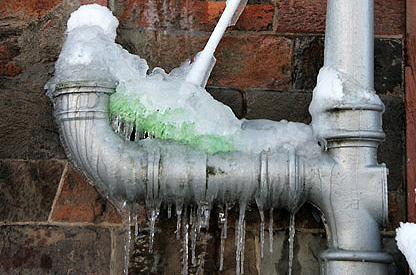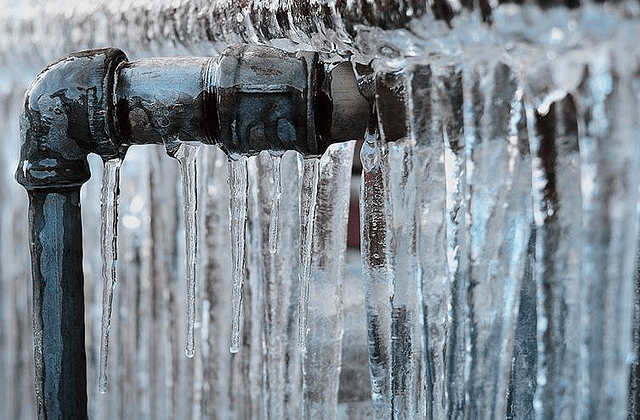Avoiding Your Pipes from Cold Weather: Effective Strategies
Avoiding Your Pipes from Cold Weather: Effective Strategies
Blog Article
In this article down the page you can find a good deal of quality guidance about 6 Ways to Prevent Frozen Pipes.

Cold weather can wreak havoc on your plumbing, specifically by freezing pipes. Right here's exactly how to stop it from occurring and what to do if it does.
Intro
As temperatures decline, the risk of icy pipelines increases, possibly leading to expensive fixings and water damage. Comprehending just how to prevent frozen pipes is vital for homeowners in cold climates.
Prevention Tips
Protecting prone pipelines
Wrap pipes in insulation sleeves or utilize warm tape to safeguard them from freezing temperatures. Focus on pipelines in unheated or external locations of the home.
Heating methods
Maintain interior spaces appropriately heated up, particularly locations with plumbing. Open up cabinet doors to enable warm air to distribute around pipes under sinks.
Exactly how to recognize icy pipelines
Try to find decreased water circulation from taps, uncommon smells or sounds from pipelines, and noticeable frost on subjected pipes.
Long-Term Solutions
Structural changes
Think about rerouting pipelines far from outside walls or unheated areas. Add added insulation to attics, cellars, and crawl spaces.
Updating insulation
Invest in high-grade insulation for pipes, attics, and walls. Proper insulation assists preserve constant temperature levels and minimizes the threat of icy pipelines.
Securing Outside Plumbing
Garden hose pipes and outdoor taps
Separate and drain pipes garden hoses prior to winter months. Set up frost-proof spigots or cover outdoor taps with protected caps.
Understanding Icy Pipes
What creates pipelines to ice up?
Pipes freeze when exposed to temperature levels listed below 32 ° F (0 ° C) for expanded durations. As water inside the pipes ices up, it broadens, taxing the pipe wall surfaces and potentially triggering them to break.
Risks and damages
Icy pipes can bring about supply of water disturbances, residential property damage, and costly repairs. Burst pipes can flooding homes and cause considerable structural damages.
Signs of Frozen Water Lines
Recognizing icy pipelines early can avoid them from bursting.
What to Do If Your Pipelines Freeze
Immediate activities to take
If you think icy pipes, maintain taps open to relieve stress as the ice melts. Utilize a hairdryer or towels soaked in hot water to thaw pipelines slowly.
Verdict
Avoiding icy pipes needs aggressive steps and fast responses. By comprehending the reasons, indicators, and preventive measures, house owners can shield their pipes during cold weather.
5 Ways to Prevent Frozen Pipes
Drain Outdoor Faucets and Disconnect Hoses
First, close the shut-off valve that controls the flow of water in the pipe to your outdoor faucet. Then, head outside to disconnect and drain your hose and open the outdoor faucet to allow the water to completely drain out of the line. Turn off the faucet when done. Finally, head back to the shut-off valve and drain the remaining water inside the pipe into a bucket or container. Additionally, if you have a home irrigation system, you should consider hiring an expert to clear the system of water each year.
Insulate Pipes
One of the best and most cost-effective methods for preventing frozen water pipes is to wrap your pipes with insulation. This is especially important for areas in your home that aren’t exposed to heat, such as an attic. We suggest using foam sleeves, which can typically be found at your local hardware store.
Keep Heat Running at 65
Your pipes are located inside your walls, and the temperature there is much colder than the rest of the house. To prevent your pipes from freezing, The Insurance Information Institute suggests that you keep your home heated to at least 65 degrees, even when traveling. You may want to invest in smart devices that can keep an eye on the temperature in your home while you’re away.
Leave Water Dripping
Moving water — even a small trickle — can prevent ice from forming inside your pipes. When freezing temps are imminent, start a drip of water from all faucets that serve exposed pipes. Leaving a few faucets running will also help relieve pressure inside the pipes and help prevent a rupture if the water inside freezes.
Open Cupboard Doors
Warm your kitchen and bathroom pipes by opening cupboards and vanities. You should also leave your interior doors ajar to help warm air circulate evenly throughout your home.

I ran across that piece about Helpful Tips to Prevent Frozen Pipes this Winter while doing a search on the search engines. Sharing is nice. You just don't know, you may just be doing someone a favor. I enjoy your readership.
Article Report this page